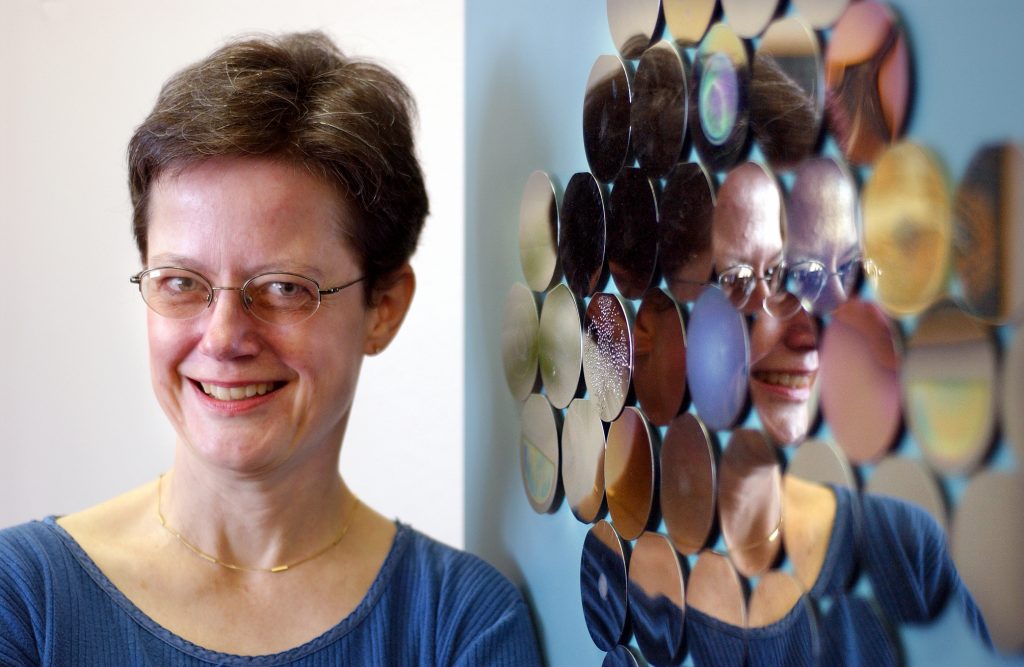ALBUQUERQUE, N.M. — Julia Phillips, Director of the Physical & Chemical Sciences Center at Sandia National Laboratories, was awarded the US Department of Labor Women’s Bureau’s Horizon Award at a recent New Mexico Commission on the Status of Women Estrella Award ceremony.

This is the inaugural year for the Horizon Award, and New Mexico is serving as the pilot. The recipient of this award must be a New Mexico resident who has contributed significantly to the acceptance and advancement of women in science, engineering, math or technology.
Phillips’ efforts in helping women and girls develop an interest in science and engineering as a career over the past 20 years are undeniable. Like Al Romig, Sandia’s Vice President for Science-Technology & Partnerships, who nominated her says, “Julia’s resume shows she is the consummate role model for girls and women aspiring in science and engineering.”
But there’s more than a resume, there’s a personal commitment that stems from a childhood realization that science is for girls too.
Growing up in Freeport, Ill. — a small town with a population of 25,000 and surrounded by cornfields — Phillips remembers kneeling in the hall with the rest of her fifth grade class doing triangulation to measure distances and being told this was the way to measure the distance to the stars. She was awestruck.
Her mother was always ordering science kits that she and her brother played with and used to expand their knowledge in science. Her senior year, it was not an option to quit math, like some of the other girls. By the time she graduated from high school she knew she was going to study science in college.
She pursued an undergraduate degree in physics from the College of William and Mary and a PhD in applied physics from Yale.
After Yale, she took a job as a research scientist at AT&T Bell Laboratories where she worked with thin films and found herself — not to anyone’s surprise — being active in programs that encouraged young people, particularly women, to develop an interest in science.
One of the early programs was a series called “World of Science” where prominent Bell scientists would give down-to-earth lectures to high school students about different aspects of their work. The Saturday morning lectures were attended by 400 to 500 kids at a time.
She’s always mentored young women, and particularly enjoys mentoring undergraduates.
“These are the ones you have the most influence over,” Phillips says. “You get them in your labs, find out their priorities, and give them information that enables them to make choices that fit.”
Now as a leader at Sandia, she finds different ways to encourage women in science. One way, she says, is to be flexible and allow women with children to work part-time.
“For those women who are good at what they do, working part-time works out fine,” Phillips says. “When they are here, we have their full attention. You need to realize that a person’s effectiveness isn’t gauged only by the number of hours they are here.”
Finding balance between work and personal life is one of the keys to a successful career. Phillips says she has pretty much found that balance, though sometimes it gets pretty hectic. Phillips is married to a neurobiologist at the University of New Mexico and is the mother of two girls, one in the fourth grade and another in the sixth.
“I do work, and I do family,” Phillips says. “My husband helps a lot. When he travels, which is rarely, I block out my time for the kids.”
She also teaches science at her children’s school four hours a week, which fits in with her life and interest.
And how do you get girls interested in science — something she is doing with her own children?
“You start young. Encourage children to ask questions and wonder. Treat science and math as a part of life, not something to be put in a separate box. Here in New Mexico you can go out and look at the stars that are so bright. But also, let the girls and young women have role models and see that they can have balance between work and the rest of their life,” she says.
